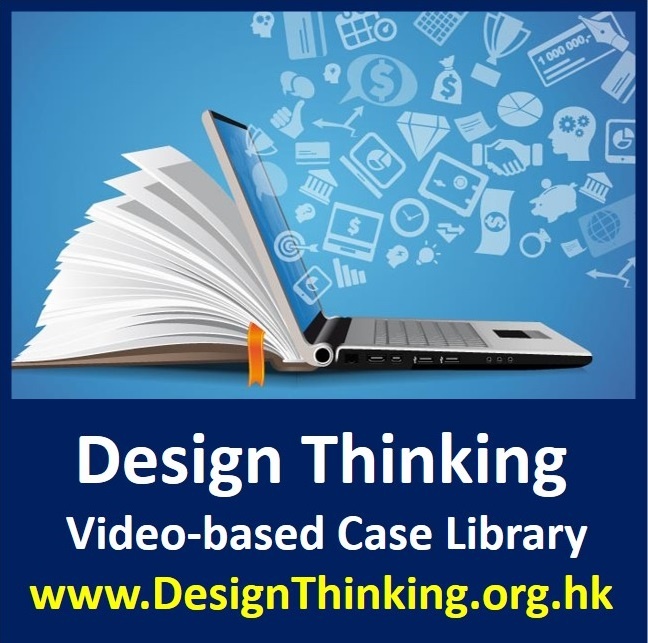Table of Contents:
Part 1: Overview of Design Thinking
Part 2: Challenges in Executing Design Thinking
Part 3: Advancements in AI-Driven Design Thinking
Part 4: Breakthrough Business Findings in 2023
Part 5: Efficiency Gains in Persona Development
Part 6: Conclusion
Part 7: Managerial Implications
Part 8: Reference
Part 1: Overview of Design Thinking
Design Thinking (DT) has been pivotal in driving business innovation at major corporations like Apple, Amazon, Airbnb, Tesla, and Uber. Recognized for its profound impact on innovation and customer insight, DT is a methodology that top companies have relied on to stay ahead in competitive markets (Anderson & November 2013; Armitage et al., 2017; Brenner & Uebernickel, 2016; Krawchuk, 2018; Prud’homme van Reine, 2017)
The Harvard Business Review underlined the significance of Design Thinking in its publication, “HBR’s 10 Must Reads on Design Thinking”, which distilled critical insights from over thirty case studies conducted over the past two decades. This collection underscores the methodology’s enduring relevance and transformative potential in strategic business contexts (Clayton et al., 2020).
Part 2: Challenges in Executing Design Thinking
A significant challenge in implementing the Design Thinking process effectively is the scarcity of time. Recent studies highlight that 61% of participants believe this scarcity hampers creativity, while 52% feel it adversely impacts decision-making, leading to rapid, often compromised decisions (Dash, 2023).

Furthermore, 65% of respondents report that time constraints sometimes necessitate trade-offs that compromise the quality of DT outcomes. Also, 42% believed that due to nearing project deadlines, the organizations dropped the Design Thinking Process outcomes or abandoned the process midway (Dash, 2023).

Part 3: Advancements in AI-Driven Design Thinking
To address these challenges, the integration of Artificial Intelligence (AI) with Design Thinking significantly enhances the problem discovery and ideation phases, crucial early stages in the methodology where understanding and defining the customer’s needs are essential. Utilizing AI tools like sentiment analysis, companies can dissect vast amounts of customer feedback and interactions to uncover subtle yet critical pain points and desires. This deep data-driven insight allows for a more accurate and nuanced discovery of problems, ensuring that the solutions developed are truly aligned with user needs.
This integration has proven highly effective in empathizing with and defining customer needs (Böckle & Kouris, 2023). Global leaders such as Airbnb and Netflix have adopted this approach to secure a competitive edge (Verganti et al., 2020).
Part 4: Breakthrough Business Findings in 2023
A 2023 study by Cisco Systems explored how AI could help managers overcome time constraints by automating tasks, thereby facilitating quicker, high-quality outcomes based on data-driven insights. The study involved experiments with four groups, two of which used AI support and two of which followed traditional methods. This provided a clear comparison of AI’s impact on the five-step Design Thinking process(Refer to Table 1 for details), demonstrating AI’s potential to enhance efficiency in innovation workflows (Dash, 2023).


Part 5: Efficiency Gains in Persona Development
In traditional design research, developing personas involves creating empathy maps individually, which are then refined in group sessions. By incorporating AI to analyze interview data and draft empathy maps, this process can be substantially accelerated. The AI-driven method can reduce the time spent by up to 44%, enabling teams to focus more effectively on refining and moderating the near-final persona drafts (Dash, 2023).

Part 6: Conclusion
The integration of Artificial Intelligence (AI) with Design Thinking is transforming the landscape of business innovation. As demonstrated in recent studies (Dash, 2023), AI’s role in enhancing the efficiency of the Design Thinking process is evident. By automating and streamlining key steps such as empathy mapping and persona development, AI enables organizations to overcome the significant challenge of time scarcity, which has been shown to hinder creativity and decision-making in traditional settings.
The Cisco Systems study further substantiates the claim that AI-supported Design Thinking expedites the innovation process and ensures higher-quality outcomes by enabling data-driven decisions. Global leaders like Airbnb and Netflix have embraced this approach, which has effectively used AI to secure a competitive advantage by understanding and addressing customer needs more swiftly and accurately.
Part 7: Managerial Implications
- Adoption of AI Tools: Managers should consider integrating AI tools into their Design Thinking processes to enhance the speed and quality of insights into customer needs. This can be particularly beneficial in industries where rapid innovation is crucial to maintaining competitive advantage.
- Training and Development: To maximize the benefits of AI-enhanced Design Thinking, organizations should invest in training their teams not only in Design Thinking principles but also in the effective use of AI tools. This dual focus will equip teams with the necessary skills to leverage AI effectively and creatively.
- Revisiting Innovation Workflows: It may be necessary for organizations to revisit and potentially redesign their innovation workflows to integrate AI capabilities fully. This could involve adjusting project timelines, roles, and responsibilities to accommodate new tools and techniques.
- Ethical Considerations and AI Governance: As AI becomes more integrated into critical business processes, managers must also consider the ethical implications and ensure proper governance around AI usage to avoid biases and protect customer data privacy.
- Continuous Evaluation: Implementing AI in Design Thinking is not a set-and-forget solution. Continuous evaluation of the effectiveness of AI tools, coupled with regular updates and adjustments, will be essential to ensure that the integration remains beneficial as both technology and customer needs evolve.
By addressing these managerial implications, leaders can not only enhance the efficiency of their Design Thinking initiatives but also foster a culture of innovation that is both agile and customer-centric. The potential for AI to transform Design Thinking into a more powerful tool for business innovation is vast, and tapping into this potential will be key for organizations aiming to thrive in the dynamic business environments of today and tomorrow.
Part 8: Reference:
Anderson, C., & November, F. (2013). The shared genius of Elon Musk and Steve Jobs. Fortune,(November 21)(https://fortune. com/2013/11/21/the-shared-genius-of-elon-musk-and-steve-jobs/).
Armitage, A., Cordova, A. K., & Siegel, R. (2017). Design Thinking: The answer to the impasse between innovation and regulation. Geo. L. Tech. Rev., 2, 3.
Böckle, M., & Kouris, I. (2023). Design Thinking and AI : A New Frontier for Designing Human‐Centered AI Solutions. Design Management Journal, 18(1), 20-31. https://doi.org/10.1111/dmj.12085
Brenner, W., & Uebernickel, F. (2016). Design Thinking for Innovation: Research and Practice (1st ed. 2016 ed.). Springer International Publishing AG. https://doi.org/10.1007/978-3-319-26100-3
Clayton, M. C., Vijay, G., Indra, N., & Harvard Business, R. (2020). HBR’s 10 Must Reads on Design Thinking. Harvard Business Review Press.
Dash, S. K. (2023). Artificial Intelligence (AI) Facilitated Data-Driven Design Thinking. In (pp. 17-24). Springer Nature Switzerland. https://doi.org/10.1007/978-3-031-49215-0_3
Krawchuk, F. (2018). Design thinking: How to thrive in a VUCA world. In Exceptional Leadership by Design: How Design in Great Organizations Produces Great Leadership. Emerald Publishing Limited.
Prud’homme van Reine, P. (2017). The culture of design thinking for innovation. Journal of Innovation Management, 5(2), 56-80. https://doi.org/10.24840/2183-0606_005.002_0006
Verganti, R., Vendraminelli, L., & Iansiti, M. (2020). Design in the age of artificial intelligence. Harvard Business School Working Paper, No. 20-091. https://www.hbs.edu/faculty/Pages/item.aspx?num=57691







![[Class Recap] Empowering Your Creativity and Innovation Power](https://i0.wp.com/www.innoedge.com.hk/wp-content/uploads/2024/04/20240329_180728-scaled.jpg?resize=218%2C150&ssl=1)
![[Class Recap] Developing Sustainable Business Models through Systems Thinking](https://i0.wp.com/www.innoedge.com.hk/wp-content/uploads/2024/04/20240328_181754-scaled.jpg?resize=218%2C150&ssl=1)
![[Class Recap] Creating Wonderful User Experience through Customer Journey Design](https://i0.wp.com/www.innoedge.com.hk/wp-content/uploads/2024/04/20240328_131024-scaled.jpg?resize=218%2C150&ssl=1)











